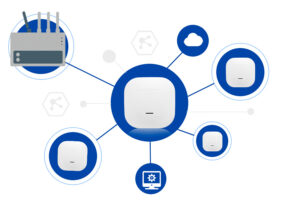
Cryogenic Refrigeration as a Service: Democratizing Quantum Access
Quantum computing promises to solve problems that classical machines cannot, but achieving stable qubit performance comes with daunting technical demands. Among the greatest challenges is cryogenic refrigeration, which requires cooling qubits to near absolute zero. These systems are massive, expensive, and require expertise that few organizations possess. For startups, universities, and smaller labs, the barrier to entry can be insurmountable. A new model called Cryogenic Refrigeration as a Service (CRaaS) is emerging to address this. Erik Hosler, an observer of frontier compute infrastructure, underscores that democratizing access to enabling technologies is as vital as breakthroughs in qubits themselves. His perspective highlights the need to broaden participation in quantum innovation.
The logic is simple that if refrigeration capacity can be pooled, more researchers gain access without each bearing the full cost of specialized infrastructure. Just as cloud platforms allowed startups to scale without building their own data centers, CRaaS offers a pathway for smaller players to compete in quantum. This model could accelerate discoveries, diversify ecosystems, and ensure that progress in quantum computing is not limited to a handful of well-funded corporations or government labs.
The Cooling Challenge in Quantum Computing
At the heart of most quantum systems is the requirement to operate at temperatures close to absolute zero. Superconducting qubits, one of the most widely pursued architectures, must be cooled to millikelvin levels to maintain coherence. Even photonic and ion-trap systems often require complex cryogenic support to reduce noise and stabilize operations.
Refrigeration is not a minor technical detail, but it is the single most expensive and complex part of a quantum setup. Dilution refrigerators can cost millions of dollars, require large physical footprints, and consume enormous amounts of energy. Maintaining these systems demands specialized expertise, from cryogenics engineers to systems integrators. For all but the largest institutions, the cooling challenge creates a hard ceiling on participation in quantum research.
Barriers for Startups and Researchers
The prohibitive cost of cryogenic systems has created a landscape where only a select few organizations can operate at the frontier. Startups may have brilliant ideas for algorithms, error correction, or qubit design, but without access to refrigeration, they cannot test or validate their concepts. Universities face similar challenges, as budgets for large-scale infrastructure rarely extend to cryogenics.
This barrier has two consequences. First, it narrows the pool of participants in quantum research, concentrating innovation among a handful of companies and national labs. Second, it slows overall progress, since many promising ideas never reach the experimental stage. In contrast, broader access to refrigeration could unleash a wave of experimentation, failures, and breakthroughs that collectively accelerate the field.
The Case for Refrigeration as a Service
Cryogenic Refrigeration as a Service (CRaaS) proposes to address this problem by centralizing cooling infrastructure and offering it as a shared resource. The model parallels cloud computing, which revolutionized software development by freeing startups from the burden of building data centers. By pooling costs and expertise, CRaaS allows more organizations to access refrigeration without duplicating infrastructure.
In practice, CRaaS could take several forms. National labs could host shared facilities that startups and universities rent on demand. Private companies could offer commercial cooling services as part of broader quantum ecosystems. Even hybrid models could emerge, where governments provide seed funding and industry manages operations.
The benefits extend beyond cost savings. Centralized refrigeration allows for professional maintenance, higher uptime, and standardized protocols. Researchers gain reliable access to cooling, while service providers achieve economies of scale. By lowering barriers to entry, CRaaS could expand the quantum community and accelerate discovery.
Ecosystem and Policy Implications
The implications of CRaaS extend to both innovation ecosystems and national policy. On the innovation side, democratized access means that startups and smaller institutions can compete more effectively. It creates diversity in approaches, increasing the likelihood of breakthroughs. Quantum computing is still in its experimental phase, and more participants mean more avenues explored.
From a policy perspective, CRaaS aligns with calls from the Special Competitive Studies Project (SCSP) for broadening access to frontier compute. Just as access to AI training clusters is now recognized as a matter of competitiveness, access to quantum infrastructure will shape future leadership. Nations that invest in shared refrigeration services could create ecosystems where innovation flourishes, while those that fail to democratize access risk consolidating progress in a few hands.
Allied cooperation is another dimension. Shared cryogenic facilities across trusted partners could reduce costs, expand access, and create international networks of quantum researchers. Such collaboration would not only accelerate progress but also embed security and trust into the foundations of quantum ecosystems.
Innovation Through Shared Infrastructure
Lowering barriers through CRaaS is necessary, but it is not sufficient. Quantum systems require progress on qubits themselves, error correction, and scalable architectures. Refrigeration provides the foundation, but the real measure of success will be whether useful, large-scale quantum systems can be built.
Erik Hosler remarks, “We need hundreds to thousands of usable qubits with the capability to do billions of sequential operations to really do useful work.” His observation highlights the scale of the challenge. Shared refrigeration services can democratize access, but progress depends on parallel advances in qubit performance and error correction. Infrastructure and qubits must develop together for quantum computing to move from experimental promise to practical reality.
CRaaS ensures that when breakthroughs occur, more organizations are positioned to act on them. It broadens the base of participants, making quantum innovation less dependent on a few incumbents. By combining shared infrastructure with ongoing advances in qubit design, the field can move closer to the threshold of useful quantum computation.
Cooling the Path to Innovation
Quantum computing faces immense challenges, but access should not be one of them. While essential, cryogenic refrigeration has become a bottleneck that limits who can participate in the field. Cryogenic Refrigeration as a Service offers a way to transform this bottleneck into a bridge, democratizing access much like cloud computing did for software.
For startups, universities, and smaller labs, CRaaS could mean the difference between remaining on the sidelines and contributing to breakthroughs. For policymakers, it represents a strategic investment in broadening participation and accelerating national competitiveness. For the global quantum community, it ensures that innovation is not concentrated but distributed.
Cooling the path to innovation means ensuring that infrastructure serves as an enabler rather than a gatekeeper. By investing in CRaaS, the U.S. and its allies can expand the frontier of quantum research and accelerate the journey from promise to practice.



